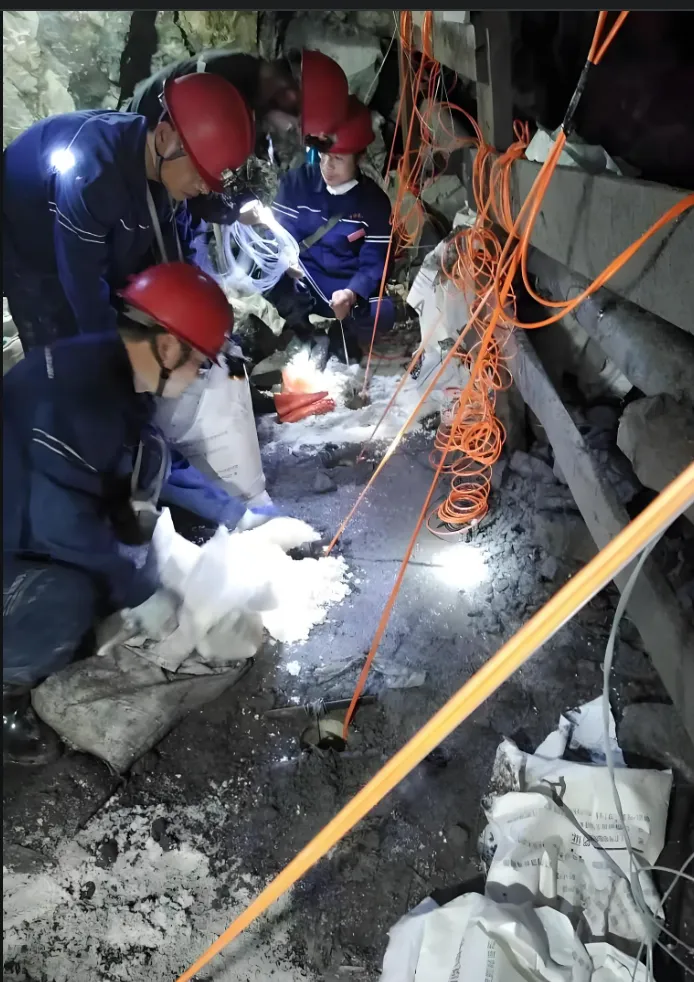
Overview of Metal Mine Mining - Black King Kong Report
Preface
Undermining, simply put, is the process of dislodging ore from the ore body so that it can be further processed and utilized. Don't underestimate this process; it's the foundation of the entire mining operation and directly impacts subsequent work efficiency and ore quality. Just like building a house, a solid foundation ensures a stable structure.

Throughout the history of mining, undermining methods have continuously evolved and innovated. From the initial simple manual mining to the later application of various advanced technologies, each transformation embodies the wisdom and hard work of countless mining professionals. Today, I will introduce several common undermining methods, including shallow hole undermining, medium-deep hole undermining, deep hole undermining, and chamber blasting.
Shallow Hole Undermining
Imagine, in the deep underground mine, flickering dim lights, the constant roar of machinery, and miners working nervously and orderly; this is the scene of shallow hole undermining operations.
Shallow hole undermining is a classic undermining method in the mining field. It uses light drilling machines for drilling operations, like a skilled craftsman carefully creating blast holes on the ore body. The diameters of these blast holes are usually between 30 and 46 millimeters, and the depths are between 3 and 5 meters. Although they appear somewhat "small" from the data, they play an irreplaceable role in actual mining operations.
When encountering irregular ore bodies with a thickness of less than 5 to 8 meters, the advantages of shallow hole undermining are evident. It can flexibly adapt to the shape of the ore body, precisely dislodging the ore from the ore body like tailor-made clothing, maximizing ore recovery and minimizing dilution. This is like cleverly using every piece of fabric when cutting clothes, reducing waste, and making the most of resources.
Shallow hole undermining is not perfect. Because the amount of ore blasted each time is relatively small, the undermining efficiency is limited. Moreover, working in an environment with exposed roof presents safety risks for miners. Like traveling in the wind and rain, although brave, it also carries risks. With continuous technological advancements, the application of mechanized drilling equipment is gradually improving these issues, enhancing both safety and efficiency in shallow hole undermining.
Medium-Deep Hole Undermining
With the continuous advancement of mining technology, the medium-deep hole undermining method has emerged, like a new star in the mining field, gradually showing its prominence in mining operations.
Medium-deep hole undermining mainly uses medium and heavy drilling machines and drill rods to drill medium-deep holes, also known as drill rod blast hole undermining. The diameters of these blast holes are generally between 50 and 70 millimeters, and the depths usually do not exceed 15 meters. Compared with shallow hole undermining, medium-deep hole undermining has larger and deeper blast holes, giving it unique advantages in mining operations.
When mining ore bodies with a thickness of more than 5 to 8 meters, the advantages of medium-deep hole undermining are fully demonstrated. Its undermining capacity is stronger, and a single blast can dislodge more ore, greatly improving mining efficiency. Like a strongman, it can easily lift heavier objects and complete more arduous tasks. Medium-deep hole undermining creates conditions for parallel operations of multiple processes in some mining methods, making mining operations more efficient.
Medium-deep hole undermining is not flawless. Because the blast holes are mostly fan-shaped, large ore pieces are easily produced during blasting, requiring secondary crushing, increasing the workload and cost. At the boundaries of the ore body, ore loss and dilution are difficult to control, posing a challenge to the full utilization of resources. However, with continuous technological development, these problems are gradually being solved. For example, optimizing blast hole layout and blasting parameters can effectively reduce the production of large ore pieces; adopting advanced mining processes and technologies can better control ore loss and dilution.
Deep Hole Undermining
In the 1950s, deep hole undermining technology began to emerge and almost completely replaced chamber blasting in the 1960s, becoming one of the important technologies in the mining field.
Deep hole undermining requires the use of specialized drilling rigs for drilling operations. These specialized drilling rigs are like "strongmen" in the mine, capable of drilling large-diameter, deep blast holes in hard ore bodies. Their diameters are usually greater than 90 millimeters, and the depths exceed 15 meters. This large diameter and deep hole design gives deep hole undermining unique advantages in mining operations.
When mining thick and large ore bodies, the efficiency advantage of deep hole undermining is fully demonstrated. A single blast can dislodge a large amount of ore, greatly improving mining efficiency and reducing mining costs. Like a highly efficient machine, it can complete tasks quickly and steadily. Deep hole undermining has had a significant impact on mining method parameters, promoting the development and innovation of mining technology.
However, deep hole undermining is not without challenges. The drilling accuracy requirements are extremely high; any deviation may affect the blasting effect and ore quality. During ore extraction, poor management can easily lead to ore loss and dilution. This requires operators to have superb skills and rich experience, like piloting a precise spacecraft, requiring precise control.
Chamber Blasting
In the long history of mining technology development, chamber blasting once occupied an important position. It is a method of excavating special roadways and chambers in the ore body and then performing concentrated charging and undermining. This method is like carefully placing "energy bombs" in the ore body, hoping that the ore will separate smoothly from the ore body at the moment of blasting.
However, with the passage of time and technological advancements, the shortcomings of chamber blasting have gradually become apparent. Its roadway engineering volume is enormous, like building a large and complex maze underground, requiring a large amount of manpower, material resources, and time. During blasting, the size of the broken ore is extremely uneven, easily producing large pieces and fine ore. These large pieces of ore are like untamable boulders, causing great difficulties for subsequent transportation and processing; the production of fine ore may lead to ore loss and environmental pollution.
The working conditions for chamber blasting are also extremely harsh. Miners work in narrow, dark tunnels, not only enduring heavy physical labor but also facing various safety risks. These drawbacks have led to chamber blasting being rarely used in modern mining, except in special cases such as extremely hard ore. Like a former warrior, it has gradually faded from the stage of history, but its historical mark will never be forgotten.
Summary
Through understanding these common blasting methods: shallow hole blasting, medium-deep hole blasting, deep hole blasting, and chamber blasting, it is easy to see that each method has its unique characteristics and has left a profound mark on mining history.
Shallow hole blasting is flexible and precise, like a meticulous craftsman, playing an important role in the mining of thin and irregular ore bodies; medium-deep hole blasting acts as a bridge, with its stronger blasting capacity and innovative mining methods, it has secured a place in the mining field; deep hole blasting is synonymous with efficiency, relying on its powerful blasting capacity and efficient mining of thick and large ore bodies, it has become an important means of modern mining; although chamber blasting has gradually withdrawn from the historical stage, its past glory and application in special circumstances are still worth remembering.

Previous Page


